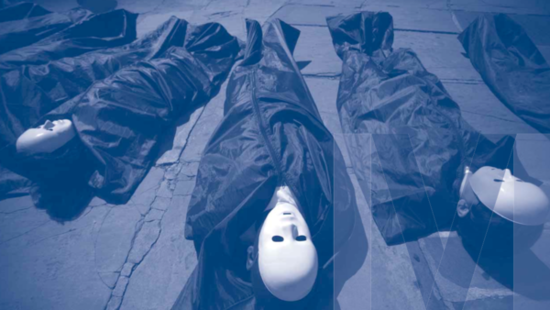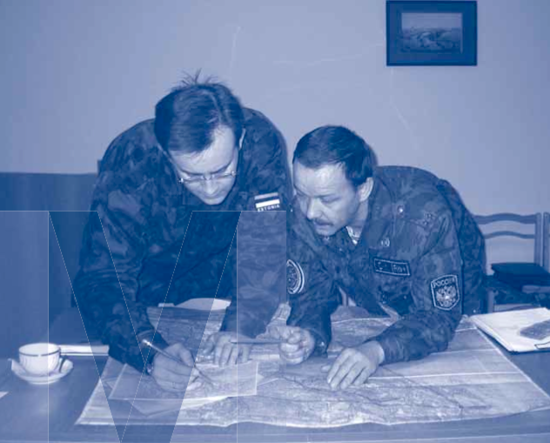There have been past attempts to regulate warfare and use of the means of warfare, but the need to limit the amount of standing armies and weapons was made painfully clear when the number of casualties and scale of destruction exceeded the boundaries of human tolerance. A need arose to keep tensions under control and find ways of reducing suffering – and thus modern arms control came into existence. Starting with the Hague Convention 100 years ago until today, its goals have remained largely the same – at the international level the goal is keeping the system as stable as possible, while at the national level the objective to ensure security with the minimal amount of force, including reaching out to potential opponents.
These goals are also reflected by the NATO strategic concept adopted in 2010, which states: “NATO seeks its security at the lowest possible level of forces. Arms control, disarmament and non-proliferation contribute to peace, security and stability, and should ensure undiminished security for all Alliance members.”
A distinction is drawn between the terms arms control and disarmament. In the broad view, it can be said that arms control pertains to establishing restrictions on and controlling the development, manufacturing, storage, trade and use of weapons, including weapons of mass destruction – mainly pursuant to international agreements achieved by way of negotiations. In some cases, coercive measures may also be applied to countries that flout the rules (arms embargoes and other restrictions). Disarmament refers mainly to elimination and reduction of arms - mainly WMD - and of armed forces. Both are essentially defensive strategies, as they are engaged in achieving and increasing transparency, cooperation, trust and stability.
Arms control agreements
The field of arms control and disarmament is often considered a privilege of superpowers where smaller siblings in the international community have no place. But the reality is more complex. It could even be argued that, because arms control is exerted over precisely the larger countries with the more aggressive intentions, it is above all the smaller, more self-defence-oriented countries that reap benefits.
Nor is arms control only a product of the Cold War; its roots go farther back. At the Hague Convention mentioned above, a convention on laws of war and several declarations on arms were adopted. For Estonia, it is interesting to note that the conference was called by Russia and the Russian delegation was led by a legal scholar of Estonian origin, Friedrich Fromhold (Fyodor) von Martens, who made a major contribution to international law and peace negotiations. To this date, international law has a “Martens clause,” which constitutes the philosophical underpinning of the Hague conventions.
The arms reduction and limitation conference at the League of Nations between the world wars faded away without result, and attempts to regulate the arms trade failed. The first effective agreement was the Geneva Protocol of 1925 to which Estonia acceded and which prohibited the use in war of asphyxiating, poison-
ous or other gases, and of bacteriological methods of warfare. Arms control gained momentum after World War II when countries became more certain that it served not only humanitarian goals but was also in their own strategic interests.
Campaigners from the Control Arms Coalition lay in fake body bags to demonstrate in front of the UN building in New York, July 2, 2012, for the opening of the diplomatic conference on the future Arms Trade Treaty. They are calling on the over 190 countries present to agree on a strong global agreement that will bring the arms trade under control. Photo: Scanpix.
One of the most successful treaties is considered to be the Chemical Weapons Convention as it sets specific deadlines for destroying existing weapons and effective control mechanisms. The Convention on the Bacteriological (Biological) and Toxin Weapons and on their Destruction – BTWC – and the Certain Conventional Weapons Convention – CCW) also measure up to their responsibilities.
The quintessential agreements of the Cold War era were the bilateral treaties between the US and the Soviet Union: the Strategic Arms Limitation Treaty – SALT I and SALT II; the Anti-Ballistic Missile Treaty – ABM; the Intermediate-Range Nuclear Forces Treaty – INF; and the Strategic Arms Reduction Treaty – START I and START II.
The most important agreements from the subsequent years are the Treaty on Conventional Armed Forces in Europe – CFE; the Treaty on Open Skies; the Ottawa convention banning land mines; and the Vienna document of measures to build security and trust.
The recent past is characterized by the so-called new disarmament era that started with US President Obama’s famous Prague speech. There Obama announced and later repeated that the US’s goal was to achieve peace and security in a world without nuclear weapons. He also noted that it would take time to achieve the goal. One milestone of this era was the new START signed between the US and Russia in 2010. A positive change in the US position toward the Arms Trade Treaty (ATT) allowed talks to start at the UN on signing an arms trade agreement.
Hopefully an understanding on the new agreement will be reached in 2013. If we also add the Hague Code of Conduct against Ballistic Missile Proliferation, and the entry into force of the Convention on Cluster Munitions in 2010, that completes the list of the main arms control related achievements of the last decade. Preparations will continue for launching talks on a Fissile Material Cut-off Treaty – FMCT.
The commander of the Estonian Defence Forces arms control precinct with commander of the Russian Federation escort team study a map of the inspection area at an inspection conducted in St. Petersburg in 2004 in accordance with the OSCE Vienna Document.
Estonia’s profile
Estonia has joined all of the most important multilateral disarmament and non-proliferation agreements, international treaties on conventional weapons and documents containing measures for building trust. Our choices have proceeded from the desire to ensure the country’s security and to increase the trust that other countries have in us.
Mutual trust and cooperation are increased by, for instance, the OSCE’s Vienna document and the Treaty on Open Skies, the main goal of which is to gather information on the subscribing states’ military forces and activity. The Vienna document sets out mutual inspections of member states, while the Treaty on Open Skies allows states parties to carry out aerial surveillance of the entire territory of other member states. Both allow openness of international relations to be increased, which is a precondition for increasing trust.
Estonia also does its share to transform arms control conventions into generally recognized international standards of conduct. For instance, Estonia has sought the prohibition and destruction of infantry mines worldwide. We have done more than advocate verbally for this cause, donating a total of USD 49,000 to the UN’s volunteer anti-mine efforts since 1999.
Estonia also makes voluntary donations into the IAEA nuclear security fund, which helps countires increase their nuclear security capacity. In essence the IAEA provides technical assistance to states parties in protecting nuclear materials and radioactive substances, which has taken on a greater importance in recent years in connection with the risk of nuclear terrorism.
Still, arms control holds opportunities that we could make better use of to pro- mote our interests and security. Years ago, Margus Kolga wrote in Diplomaatia, the Estonian journal of diplomacy: “Estonia’s contribution in the field of arms control has thus far been one of understanding accompanist than active spokesperson, and it would be important to make use of this to increase our own security.”(2) Admittedly, this is still so today.
There do exist preconditions and possibilities for active efforts. We are regarded as a reliable and competent partner in the international arms control system, a partner that does not pursue its own agenda but stands for peace, security and disarmament in the common cause. We also need a clearer arms control profile for being a candidate for UN Security Council member, as role in international disarmament and peacekeeping is considered by the UN to be a key indicator of the maturity of states.
Arms control topics do not only pertain to large countries, but everyone, including Estonia. They are important to our security both directly and indirectly. The principles of arms control – cooperation, transparency and trust-building measures – are actually in everyone’s interest. While many arms control formats date from the Cold War era, today’s problems are being resolved in a new way and outside the existing formats. This could favour representatives of countries with a lighter historical legacy, such as Estonia.
Armed conflicts do not take place these days between but rather within countries, and this imposes somewhat different functions on arms control. For instance, arms control topics include availability of small and light arms, and problems of weapons culture and armed violence against women. Regulating arms trade and export control of strategic goods is becoming important. Important future arms control topics for Estonia also include biotechnology, including gene technology, and information technology. Use of information technology has changed the international security environment and increased security risks. Discussions take place in the UN, OSCE and other international forums to agree on states’ standards of conduct and trust-building measures in cyberspace. The goal of trust-building measures in the cyber-sphere is to increase transparency of states, to agree on cooperation and stability measures that would lay a foundation for broad-based internation-
al consensus for the use of information technology and cyberspace for peaceful purposes. Increasing global security is in Estonia’s interests and we take part actively in these discussions. It is not simple as there are many parties affected by it and the positions of the parties are different. The dilemma of fundamental freedoms and security must be resolved without violating human rights and freedom of movement.
Arms control is not a value in and of itself; it is a part of the broader national strategy. In the long term, it can help save costs.(3) In Estonia, we have taken a modest attitude toward the possibilities afforded by arms control. We might ask ourselves which of our security concerns might be furthered by arms control, and what the nature of modern arms control should be. The topic is a large one and deserves more thorough coverage in security studies or, for instance, at the Lennart Meri Conference. Worldwide, arms control has always been more a question of political will, not so much of technical means, and this discussion would certainly lead to a more expansive, broader view of things.
I recently heard a story of a pastor whose hobby was raising koi, colourful fish often seen in aquariums. When the pastor was asked why some of his fish were small he answered: “When koi live in an aquarium, they never grow past 5-7 cm. If they live in a larger pond, they can reach 25 cm in length. In a large lake where they are free to swim and live as they please, they can attain a metre in length. The size of the body of water determines the size of the fish.” It is the same way with our security – the broader-minded we are, the more we will achieve.
This article reflects the personal opinions of the author.
REFERENCES
(1) According to Stockholm International Peace Research Institute (SIPRI), the sale volumes of conventional weapons grew in 2007- 2011 by 24% compared to 2002-2006 (SIPRI yearbook for 2012).
(2) Margus Kolga, Relvastuskontroll ja usaldusmeetmed – üks julgeoleku tõstmise vahendeid (Arms control and trust-building measures – one way of increasing security). Diplomaatia: 49/50, October 2007.
(3) See e.g. UNIDIR studies and publications on this topic.
Jana Vanamölder is Senior counsellor in the Estonian Ministry of Foreign Affairs security policy and arms control office.








